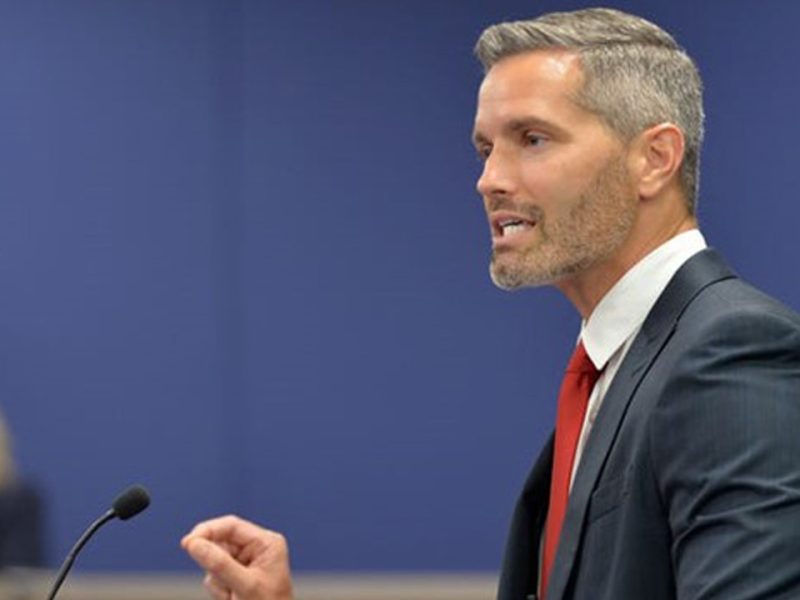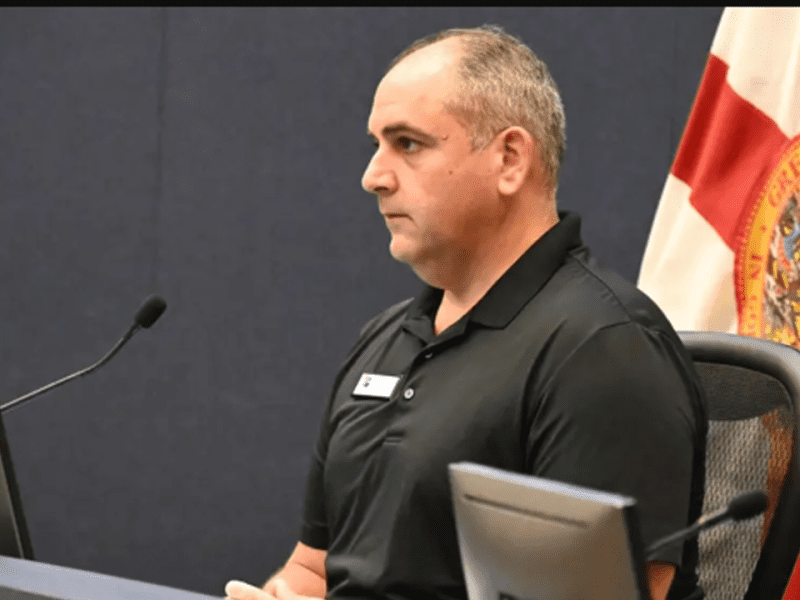
The feds earmarked $15B for Florida schools to help kids in the pandemic, but it’s largely an unused stockpile
Florida Politics | By Danielle J. Brown, Florida Phoenix | July 27, 2021
How did Florida end up with the little-used $15 billion?
By the spring of 2020, reality was setting in that the COVID-19 pandemic would stick around for quite some time, and Florida’s school districts were confronting an unknown education world.
Districts started talks about the next school year, considering mask mandates, staggered classroom schedules, and other measures to bring struggling students up to par — all of which would need money.
On May 18, 2020, the U.S. Department of Education under the Donald Trump administration released $770 million dollars to Florida schools to address the impacts of COVID-19.
More than a year later, and now under President Joe Biden’s administration, the amount has spiked to some $15 billion — a largely unused stockpile of federal relief funds designated to pull Florida schools out of the COVID pandemic and mitigate its effects for this school year as well as the next few school years, according to data from the U.S. Department of Education.
Most of the dollars have yet to be disbursed to school districts for this past school year and this coming school year, and the 2021-22 academic year is just a few weeks away.
That means initiatives outlined by the federal government, such as tackling student learning losses during the pandemic, are stuck waiting to help vulnerable students.
“Every minute these funds sit in Tallahassee is time that the funds are not being used to help Florida’s students,” wrote Andrew Spar, president of the Florida Education Association, a statewide teacher union, who sent a letter to Gov. Ron DeSantis on July 21.
Spar’s letter states that “both the Trump and Biden administrations provided states with significant additional federal funding” in order to invest in schools and students, and the state has “missed out on summer learning opportunities these funds were, in part, intended to help fund.”
Christina Pushaw, a spokesperson for DeSantis, noted that these federal funds are intended to span the COVID-19 recovery over several years, and tapping into some of these funds are “premature by months, if not longer.”
“It would be irresponsible to wastefully rush to spend these dollars before they are needed, as these funds are intended to address the full needs of educational recovery over multiple fiscal years,” Pushaw said in an email to the Phoenix referring to certain funds from the federal American Rescue Plan.
But how did Florida end up with the little-used $15 billion?
The Phoenix reached out to the Florida Department of Education for several inquiries on how exactly the funds have been used. A communications staffer said the Department is “working on” the inquiries.
Using U.S. Department of Education data, the Phoenix compiled the pots of federal money related to the $15 billion, according to the U.S. Department of Education:
One pot of money is referred to as the Higher Education Emergency Relief fund (HEER), which also includes K-12 schools. The U.S. Department of Education has allocated a total of $4,338,095,119 to Florida. According to May 2021 data, the state has spent $1,160,085,155 from this bucket.
Another pot is the Governor’s Education Emergency Relief fund (GEER), which also includes K-12 schools. The feds have provided Florida $249,384,820. Florida has spent $97,221,762 from the GEER funds as of May 31.
A major chunk of COVID-19 relief funds are coming from what’s called the Elementary and Secondary Schools Emergency Relief funds, known as the ESSER funds.
The ESSER funds have come in three waves:
The first wave came from the CARES Act under the Trump administration signed in March of 2020, just as the pandemic was coming in full force. This was the $770 million mentioned before, and the U.S. Department of Education reports that Florida has spent a little over $475 million of this initial ESSER funds, often referred to as ESSER I.
The second wave of ESSER funds, called ESSER II, became available under another Trump-administration COVID relief package, referred to as Coronavirus Response and Relief Supplemental Appropriations, signed in December 2020.
This one had a bigger price tag, because then-Secretary of Education Betsy DeVos wanted to encourage schools across the nation to reopen schools for in-person instruction. Even though Florida schools had been open for the 2020-21 school year, the state received $3.133 billion. Florida has used $11.6 million of the ESSER II funds.
The third wave came about on March 24, 2021, when the Biden administration released billions in K-12 relief funds from the American Rescue Plan Act that would go to states across the nation to help with COVID recovery. This is the ESSER III fund.
ESSER III funds for Florida totaled $7,038,246,438, to help counter any learning loss or offer emotional support systems for the mental health of students. However, the money provided to states represented two-thirds of the full amount, in this case, $4.69 billion for Florida.
Out of this $4.69 billion, Florida has spent zero of these funds, according to federal data from May 31.
All three funds — the HEER, the GEER, and the multiple ESSER funds — total about $13.2 billion dollars. And the state of Florida has used some $1.7 billion from early 2020 to now.
But there’s still another unused pot: about $2.3 billion — the one-third left from the ESSER III funds.
The ESSER funds in the American Rescue Plan are a little different than the Trump-era ESSER funds, because the full allocation was not released to states in one go around.
All states received two-thirds of their allocations — Florida got the 4.69-billion — while the remaining third would be released once the U.S. Department of Education approved of a state plan describing how these funds will be used to help schools recover from COVID.
These state plans were due June 7, and Florida did not make the deadline. That means the $2.3-billion is still not available for Florida schools.
According to the U.S. Department of Education’s website, at least 39 plans have been submitted, as well as a plan for Washington D.C. Florida is not on the list.
Of those submitted, 17 plans have been approved by the federal government, meaning those states have received the full allocation from the American Rescue Plan funds for their states’ schools.
The Phoenix asked the Florida Department of Education to provide reasons why the state is late on delivering this plan and is awaiting a response.
Once Florida submits a state plan for the $2.3 billion and the U.S. Department of Education approves it, Florida should have full access to some $15 billion in COVID-19 recovery funds for schools.
Recently, the Florida education department asked districts, educators and other stakeholders to provide feedback on how some of the federal funds should be spent as part of an “application,” but it’s not clear which pot of money is involved. Would it be the $4.69 billion available to Florida now, or the one-third amount, $2.3 billion, related to submission of a state plan?
In addition, individual school districts appear to have gotten part of the federal relief money.
However, Gretchen Saunders, chief financial officer for the St. John’s County school district in Northeast Florida, told the Phoenix that the district hasn’t “received any information” from the state about the American Rescue Plan dollars, meaning the ESSER III funds.
She doesn’t know when those dollars will be available, but she hopes to learn more about the funds, “possibly within the next few weeks.”
The school district in Polk County confirmed in an email to the Phoenix that the Central Florida district has not had access to American Rescue Plan COVID-19 relief funds. Same goes for the Miami-Dade County school district in South Florida.
And a communications staffer from Orange County school district said the district has not received any information from the state regarding these funds.
Spar, or the FEA, thinks districts should have access to the billions in federal funds and that not knowing when this money will come in makes planning for the upcoming school year challenging.
“Districts can’t plan for additional supports they want to provide,” Spar told the Phoenix. “If you want to put in extra programs after school or before school, or you want to enhance your summer programs, do more project-based learning, if you wanted to hire additional support for mental health services… none of that is possible unless you know how much money you’re getting.”





